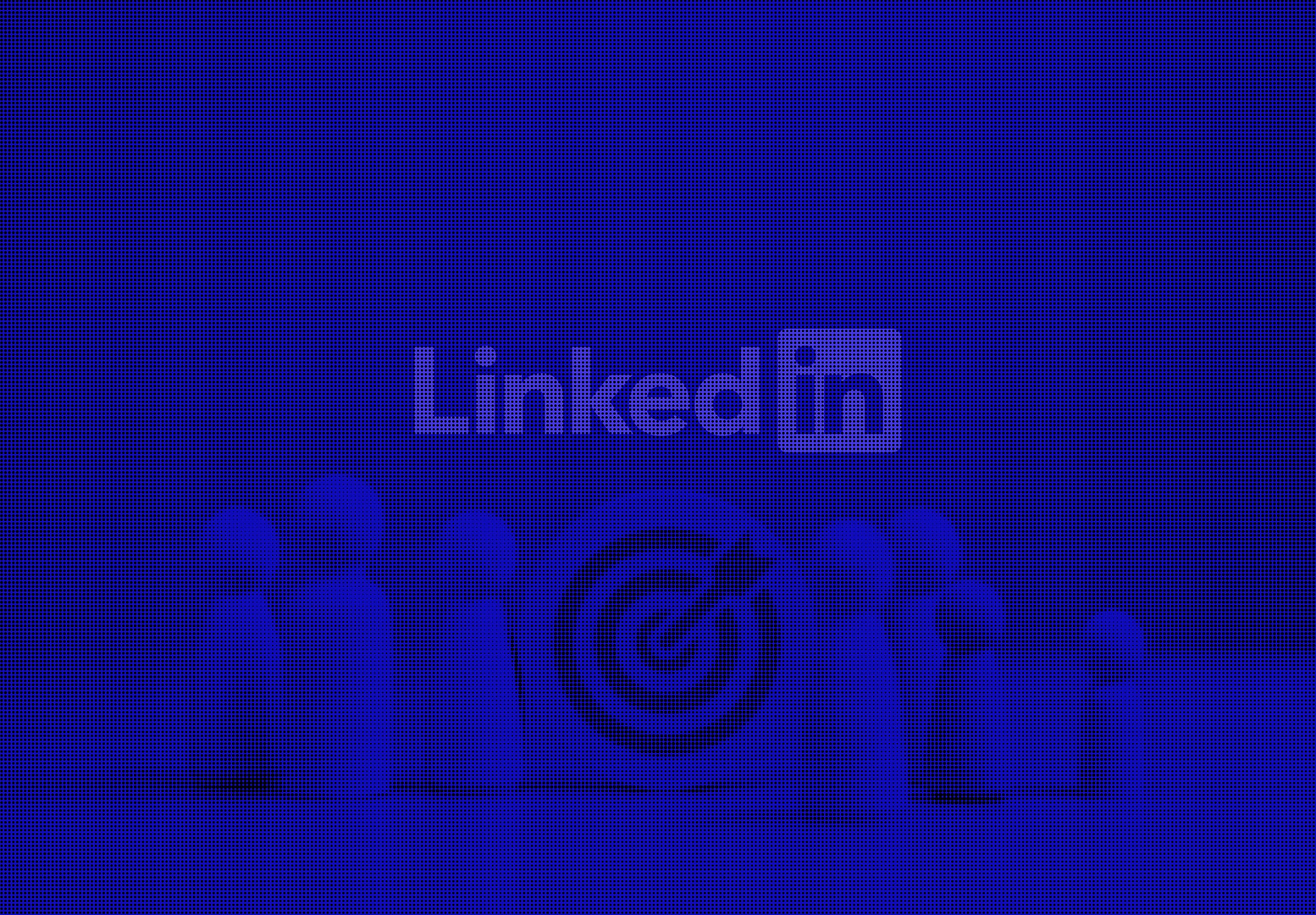In this post, we’ll go through efficient LinkedIn marketing techniques for B2B companies that will help them achieve their objectives.
Why LinkedIn is Crucial for B2B Businesses
LinkedIn has become an effective platform for B2B companies to raise brand recognition, connect with new clients, and create leads. LinkedIn provides a valuable chance for organisations to access their target audience with over 700 million users, including decision-makers and influencers.
Furthermore, LinkedIn provides various products, such as LinkedIn Groups, LinkedIn Ads, and Sales Navigator, that enable businesses to communicate with their target audience in a more targeted and personalised manner.
Optimising your LinkedIn Profile
Your LinkedIn profile is your digital business card and is frequently the first impression potential consumers get of your company. As a result, it is critical to optimise your profile to ensure that it accurately portrays your company.
To optimise your LinkedIn profile, make sure to:
- Use a professional profile picture and cover photo.
- Write a compelling headline and summary that highlights your business’s value proposition.
- Include relevant keywords in your headline and summary to improve your profile’s visibility in LinkedIn search results.
- Showcase your skills and accomplishments in the experience and education sections.
- Request recommendations from clients, colleagues, and other connections to build credibility.
Creating engaging content
Creating compelling content on LinkedIn is critical for increasing brand awareness and generating leads. The platform provides numerous content types that are suitable for B2B companies, including:
Types of content that work well on LinkedIn
- Industry Insights and Trends.
- How-to guides and tutorials.
- Case studies and success stories.
- Thought leadership articles.
- Company updates and announcements.
How to create engaging content for LinkedIn
To create engaging content on LinkedIn, make sure to:
- Write attention-grabbing headlines that entice readers to click on your content.
- Use images and videos to make your content more visually appealing.
- Keep your content concise and easy to read.
- Include a call-to-action at the end of your content to encourage engagement.
- Post your content when your audience is most active on LinkedIn.
Building a strong network
Connecting with new clients, creating relationships, and generating leads require a strong LinkedIn network. Here are some pointers for expanding your LinkedIn network:
Connecting with prospects and customers
- Use LinkedIn’s search feature to find potential customers and prospects.
- Personalize your connection requests to make them more compelling.
- Engage with your connections’ content by liking, commenting, and sharing.
How to expand your LinkedIn network
- Join relevant LinkedIn Groups to connect with like-minded professionals.
- Participate in LinkedIn Group discussions to increase your visibility and establish thought leadership.
- Publish content on LinkedIn to attract more connections.
Utilizing LinkedIn groups
LinkedIn Groups are an excellent way for B2B companies to interact with a specific audience, develop thought leadership, and participate in debates. Here’s how to use LinkedIn Groups to your advantage:
Joining relevant groups
- Look for and join LinkedIn Groups related to your industry, niche, or target demographic.
- Look for groups with active conversations and a large number of members.
- Find groups where your target audience is likely to be engaged.
Engaging with group members
- Share great content and ideas in group conversations to develop thought leadership.
- Respond to group members’ comments and queries to build connections and credibility.
- Avoid posting excessively promotional content or flooding the group with unrelated postings.
Leveraging LinkedIn Ads
LinkedIn Ads are an effective way for B2B companies to access a highly focused audience and create leads. The following are the many sorts of LinkedIn Ads and how to develop effective LinkedIn Ads:
Types of LinkedIn Ads
- Sponsored material: Promote material in the LinkedIn feed.
- Sponsored InMail: Send personalised communications to LinkedIn members who have shown an interest in your company.
- Display Ads: Display banner advertisements on LinkedIn pages.
How to create effective LinkedIn Ads
- Define your target demographic based on job title, industry, and firm size.
- Create appealing ad language and imagery that attract your audience’s attention.
- Use a clear call-to-action to promote clicks and conversions.
- Test and optimise your advertising over time to increase performance.
Measuring and analyzing your LinkedIn marketing efforts
Measuring and analysing your LinkedIn marketing efforts is critical for determining the efficacy of your strategy and making data-driven decisions. Here are some metrics to keep track of, as well as tools to help you measure and analyse your LinkedIn marketing efforts:
- Engagement: Track your content’s likes, comments, shares, and clicks.
- Reach: Determine the number of individuals who see your content or advertisements.
- Conversion: Track how many leads or conversions your LinkedIn marketing efforts create.
- LinkedIn Analytics: Track metrics and gain insights into your audience and content success using LinkedIn’s built-in analytics tool.
- Third-party analytics tools: Track and analyse your LinkedIn marketing efforts alongside other social media platforms using third-party solutions like Google Analytics.
Implementing an effective LinkedIn marketing strategy
Follow these steps to build an effective LinkedIn marketing strategy:
- Establish your LinkedIn marketing goals and objectives.
- Optimise your LinkedIn profile to successfully represent your company.
- Create and distribute compelling content to increase brand awareness and lead generation.
- Establish a strong network and interact with your contacts and organisations.
- Use LinkedIn Ads to reach a specific audience and create leads.
- Track progress and make data-driven decisions by measuring and analysing your LinkedIn marketing efforts.
- Test and optimise your strategies regularly to increase performance over time.
Conclusion
LinkedIn is a valuable resource for B2B companies looking to interact with potential customers, raise brand awareness, and create leads. Businesses may reach a highly focused audience and create thought leadership in their sector by employing successful LinkedIn marketing methods.
FAQs
How often should I post on LinkedIn?
It’s important to maintain a consistent posting schedule on LinkedIn, but the frequency will depend on your goals and resources. Generally, aim to post at least once a week to keep your audience engaged and maintain visibility. However, if you have the resources and content to do so, posting daily or even multiple times a day can help increase engagement and reach.
How can I build a strong LinkedIn network?
To build a strong LinkedIn network, you can follow these best practices:
- Connect with colleagues, clients, and industry professionals.
- Join relevant LinkedIn Groups and engage in discussions.
- Share valuable content that appeals to your target audience.
- Engage with your connections by commenting on their posts and sharing their content.
- Attend industry events and networking opportunities.
How do I know if my LinkedIn Ads are effective?
To measure the effectiveness of your LinkedIn Ads, you can track metrics such as click-through rate, conversion rate, and cost per conversion. You can also use LinkedIn’s built-in analytics tool or third-party analytics tools to gain insights into your ad performance and audience engagement.
Can I use LinkedIn for personal branding?
Yes, LinkedIn is a great platform for personal branding. You can use your LinkedIn profile to showcase your skills, experience, and achievements, and connect with other professionals in your industry. By sharing valuable content and engaging with your network, you can establish yourself as a thought leader and build a strong personal brand.
What are some best practices for LinkedIn content creation?
To create engaging and effective content on LinkedIn, you can follow these best practices:
- Write attention-grabbing headlines and use visuals to enhance your content.
- Share valuable insights, tips, and industry news that appeal to your target audience.
- Use a conversational tone and engage with your audience by asking questions or encouraging comments.
- Post regularly and maintain a consistent schedule.
- Avoid overly promotional content and focus on providing value to your audience.







